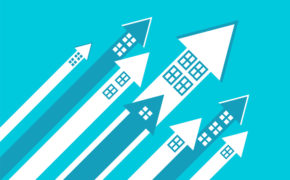How Much House Can I Afford?
The current housing market presents many opportunities for potential homebuyers. With interest rates near historic lows and the rising cost of rent, the dream of homeownership has been put within reach for many individuals looking to buy their first home.
If you’re thinking about buying your own home, it’s important to consider the costs associated with homeownership before you begin your pursuit of the perfect house. We highly recommend adhering to the following rules of thumb when asking yourself, “how much house can I afford?”
The 30% rule
To determine how much house you can afford, the 30% rule is a good place to start. This concept states that your mortgage payment, which includes property taxes, homeowners insurance, principal and interest, should not exceed 30% of your gross monthly income.
For example, if you and your spouse make a combined income of $8,000 a month, your total monthly mortgage payment should not exceed $2,400. However, this rule fails to take into account any other debt obligations you may have, such as car payments, credit card debt, student loans, etc.
$8,000 x .30 = $2,400
The 43% rule
To account for all other expenses and obtain a figure that more accurately represents your financial situation, you’ll need to use the 43% rule. To calculate the maximum mortgage payment you can afford, simply subtract your total monthly expenses from 43% of your gross monthly income.
For example, if you have a total gross monthly income of $8,000 and have $1,600 worth of expenses every month, the maximum house payment you can reasonably afford is $1,840.
$8,000 x .43 = $3,440
$3,440 – $1,600 = $1,840
How is my mortgage payment calculated
There are several factors that determine your mortgage payment. In addition to your gross income and total debt, your down payment, interest rate, property taxes, homeowners insurance and term of your loan also have an effect on your monthly mortgage payment.
One way to keep your mortgage payment as low as possible is to provide a 20% down payment at closing. Having a down payment of at least 20% increases your savings in interest over the entire life of the loan and allows you to avoid paying private mortgage insurance (PMI), which can add to your monthly expenses.
However, not everyone can afford to put 20% down on a home. For homebuyers, who have yet to establish their savings, we’ve put together a list of alternative down payment options.
Mortgage calculators
If you don’t like math, there are plenty of websites that offer mortgage calculators that can help you easily estimate how much your house payment would be. Or, you can find out how much you’re eligible to borrow by getting pre-approved by a mortgage lender.
Buying a home is one of the biggest financial decisions you’ll make in life. Make sure you make a smart financial decision and take the time to budget appropriately. By spending the time upfront to determine how much house you can afford, you’ll spend less time looking at the wrong houses and more time finding a home that satisfies your standards and fits within your budget.










